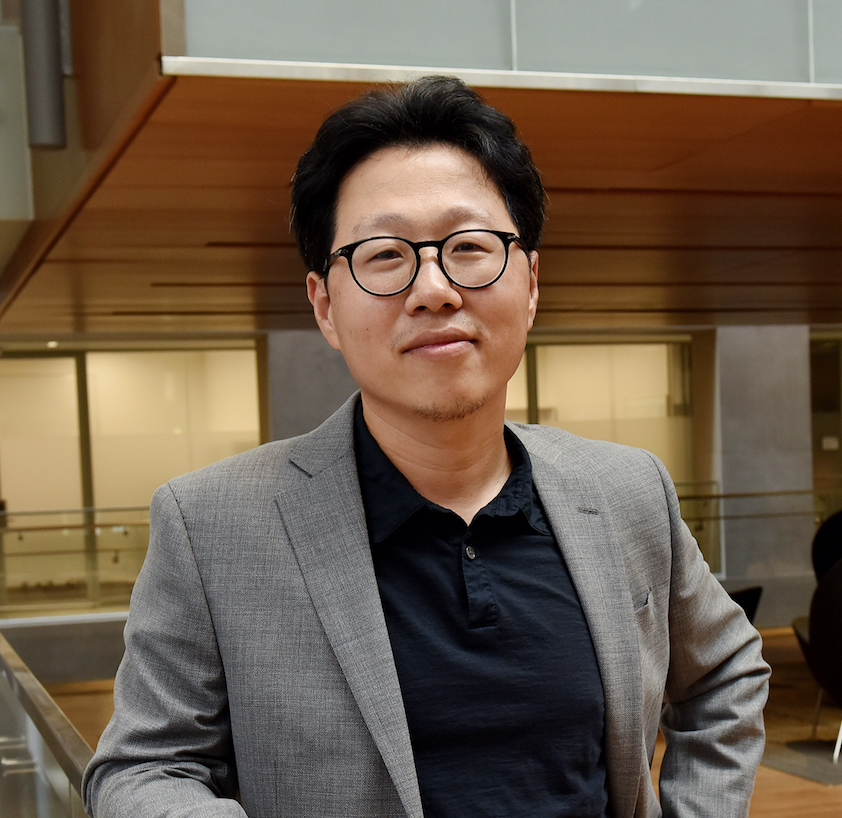Jong Hee Park
- is Professor in the Dept. of Political Science and International Relations at Seoul National University,
- is Director of Global Data Cener at Institute of International Studies, Seoul National University,
- studies political methodology and international political economy,
- received Ph.D. from Washington University in St. Louis,
- maintains MCMCpack and Bayesian taskview in CRAN,
- is recently working on dynamic network analysis, text analysis of North Korean document, and changepoint anlaysis of Bayesian shrinkage models

Recently Published Books



Recent Research Highlights
공공외교 및 공공원조를 통해 보는 한국의 소프트파워 발전 전략:설문 및 설문 실험을 중심으로(이인복 외 공저)
소프트 파워의 정책 및 학문적 중요성은 근래 들어 더욱 많은 관심을 받아왔다. 이를 방증하듯, 2018년 한 해에만도 한국 정부는 소프트파워 주요 정책 수단이라 할 수 있는 공공외교에 240억 원, 공적 원조에 3조 2000억 원의 예산을 투입했다. 그러나 이와 같은 예산 및 관련 노력이 어떠한 방식으로 사용되고 어떤 효과성을 지니는지에 대한 평가는 부족한 것이 현실이다. 본 보고서는 한국의 공공외교 및 공적 원조 노력에 대한 체계적인 평가 및 분석을 목표로 한다. 먼저 본 연구는 공공 외교와 공적 원조 현황 파악을 위해 가용한 기수집된 자료를 모두 통합 분석한 이후 그 결과와 함의에 대해 논의한다. 이어 한국에 대한 외국 국민의 인식을 측정하고자 하는 기존 자료에 대한 메타 분석을 통해 그간 노력의 성취와 보완점을 서술한다. 이에 기반하여 본 연구는 16개국의 3만 2000여 명에 달하는 응답자를 대상으로 자체적인 설문 및 설문 연구 실험을 설계 및 시행한다. 이를 통해 먼저 대상국 국민은 일반적으로 공공 외교나 공적 원조에 있어 국제적인 평판이나 포용적 가치를 중요시함을 보여준다. 또한 각 국가별, 또 국가 내 개별 사회경제적 특성에 따른 각 수단 및 접근의 효과성을 평가하고, 이에 기반한 향후 맞춤형 마이크로 타겟팅 전략의 가능성을 제시한다. 또한 한국 내 배타성의 해소가 대내외적으로 포용적 가치를 증진할 수 있는 가장 효과적 방법의 하나라는 점을 인식하고, 한국 국민의 외국인 및 이주자에 대한 인식을 측정하고 관련된 정책적 접근을 테스트해볼 수 있는 설문 및 설문 실험을 설계 및 시행하였다. 그 결과 한국 국민의 외국인 및 이주자에 대한 정확한 정보 인식은 부족하지만, 인구 특성에 따라 상당한 배타성을 확인할 수 있었으며 이에 대한 구체적, 또 제도적 해결책을 제시한다. 이와 같은 결과에 기반하여 본 연구는 소프트 파워 발전에 있어 가장 효과적인 전략적 접근은 포용성과 다양성의 증진이라는 주장에 실증적 증거를 제시하고, 향후 증거기반정책 수립을 지원하기 위한 체계적인 자료 수집과 엄밀한 분석의 필요성을 제기한다.
보고서Bayesian Estimation of High-dimensional and Time-varying Parameters in Longitudinal Data Analysis (Under Review)
In social science, regularized regression methods have been successfully applied to analyze the data with many covariates and interaction terms, possibly larger than the sample size. Yet, structural changes in longitudinal data pose a serious challenge to the application of existing regularization methods because time-varying effects can be over-regularized. Motivated by two existing studies from social science where the exact timing and scope of structural changes is unknown, we develop a hidden Markov Bayesian bridge model that investigates parametric change-points in high-dimensional longitudinal data. The proposed method successfully uncovers change-points in the relationship between government partisanship and economic growth and the relationship between food aid and the civil war on-set.
Paper Web AppendixWhy Your Neighbor Matters: Positions in Preferential Trade Agreement Networks and Export Growth in Global Value Chains (Economics & Politics, 2020)
In rapidly expanding global and regional Preferential Trade Agreements (PTA) networks, policymakers are keen to situate their countries in a better position, believing that a better position in PTA networks will help their economies trade more and grow faster. In this paper, we provide a theory that explains how changes in countries’ PTA network positions affect their trade performance. We argue that a dense and deep “neighbor network” provides a country with a wide access to global value chains, secure protection to investment, and strong credibility to their policy commitments. To measure trade performance, we compute value-added exports at the country, year, and industry level across 43 countries, 56 industries, and 15 years (2000-14). The estimation of network position effects is done by panel fixed- effects methods and the sample-splitting and cross-fitting double machine learning method. The findings show that as a country’s neighbors have deeper and wider PTA networks, the country’s value-added exports grows faster. Also, the industry-level analysis shows that sectors heavily engaging in the fragmentation of production stages exhibit faster growth with the improvement of neighbor networks.
Paper Web Appendix Replication zipDetecting Structural Changes in Longitudinal Network Data (Bayesian Analysis, 2020)
Dynamic modeling of longitudinal networks has been an increasingly important topic in applied research. While longitudinal network data commonly exhibit dramatic changes in its structures, existing methods have largely focused on modeling smooth topological changes over time. In this paper, we develop a hidden Markov network changepoint model (HNC) that combines the multi-linear tensor regression model (Hoff, 2011) with a hidden Markov model using Bayesian inference. We model changes in network structure as shifts in discrete states yielding particular sets of network generating parameters. Our simulation results demonstrate that the proposed method correctly detects the number, loca- tions, and types of changes in latent node characteristics. We apply the proposed method to international military alliance networks to find structural changes in the coalition structure among nations.
Paper R package Package vignetteQuality Over Quantity: A Lineage-Survival Strategy of Elite Families in Pre-Modern Korea (Social Science History, 2019)
We study social mobility across multiple generations in pre-modern Korea. Using two extant oldest family records, jokbo, we construct a prospective genealogical microdata containing the entire records of public offices and reproduction over five generations of the two elite family lineages in pre-modern Korea. We argue that the confluence of an ambiguous stratification system with a limited number of high-ranking offices generated a trade-off for parents between the quantity and quality of positions attained by their offspring. The result of the trade-off was unequal distributions of mobility-related family resources in order to maximize the lineage's collective goal, rather than to maximize individual children’s social ranks. Using a novel empirical strategy to take into account the heterogeneous resource-allocation within elite families, we present empirical evidence on associations between parents’ and grandparents’ social ranks and quality of offices achieved by children’s of elite Korean families.
Paper Web appendix